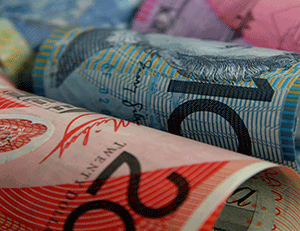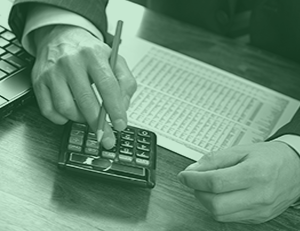A guide to Tax Rates for Sole Traders
Becoming your own boss and starting a sole trader business often comes with a raft of extra freedoms, the ability to forge your own professional path, and the satisfaction of reaping the rewards of your own hard work. But it’s not all sunshine and roses; there are added financial responsibilities and tax rate compliance requirements that sole traders face.
Whether you’re starting out as a sole trader, a company owner thinking about changing your business structure, or an established sole trader trying to estimate your tax for the year to come – it’s extremely helpful to understand how tax rates work for sole traders.
To help, we have taken a look at what the current tax rate is for sole traders, when sole traders need to pay tax, and how they go about paying tax. We have also explained payroll taxes, PAYG and GST requirements.
Sole Trader Tax Rate in Australia
| Taxable income | Tax on this income |
|---|---|
| 0 – $18,200 | Nil |
| $18,201 – $45,000 | 19 cents for each $1 over $45,000 |
| $45,001 – $120,000 | $5,092 plus 32.5 cents for each $1 over $45,000 |
| $120,001 – $180,000 | $29,467 plus 37 cents for each $1 over $120,000 |
| $180,001 and over | $51,667 plus 45 cents for each $1 over $180,000 |
As a sole trader your tax rate depends on your income. Sole Traders are taxed at the individual income tax rate, just as employees of companies are.
Similarly, much like personal income tax, sole traders are eligible for the tax-free threshold – meaning in 2021-22 you won’t pay any tax on the first $18,200 earned.
How to pay tax as a sole trader:
All PAYG payments and tax obligations can be managed through myGov. Yearly individual tax returns can also be completed through myGov. Some sole traders will elect to see a professional accountant to avoid any mistakes, make sure they are fully compliant with the ATO, and get the most out of their eligible business deductions.
Use of accounting software like Cashflow Manager – that has been designed with sole traders in mind – to make tax time simple. Our intuitive software will make sure you don’t need to be a part-time accountant to keep the finances of your business running smoothly.
Cashflow Manager makes your Tax Returns, PAYG and BAS requirements easy with comprehensive profit and loss, cashflow, and monthly summaries automatically created in just one click. Start a free 30-day trial today – with no credit card required.
So, how much tax does a sole trader pay?
As a sole trader your tax rate is calculated at the same rate as as individual personal income. This means sole traders are taxed on a sliding scale and the amount of tax you pay increases as your business income grows.
Let’s do an example: If you are a sole trader who earned $75,500 in a year you would fit within the $45,001 – $120,00 bracket. For this will pay $5,092 and then pay 32.5 cents for each $1 over $45,000 – which in this case comes to $9,912.50.
Add these two together and your income tax before deductions would be: $15,004.50.
If you’re not sure what your income may be for the upcoming year, it is a good practice to set aside at least 20 to 35% of your income in preparation for tax time as a sole trader.
Anyone who has worked as an employee before transitioning to a sole trader will likely be familiar with the way individual income rate tiers work. If not, it can seem a little confusing. Luckily, the ATO has a simple Income Tax Calculator that allows you to input your income and get an estimate of the amount of tax owed, before deductions.
Get the most out of your deductions by using our tips on how to save on tax year-round as a sole trader.

When sole traders pay tax?
At a minimum, sole traders are required to complete yearly individual tax returns.
However, sole traders are able to avoid being hit with a large lump-sum tax payment once a year by using Pay As You Go – or PAYG tax.
The ATO’s Pay as You Go (PAYG) scheme allows sole traders to pay their tax in quarterly instalments. Paying in instalments has the benefits of simplifying budgeting, smoothing your cashflow and avoiding a large yearly tax return bill.
Learn about how to opt-in for PAYG installments and how to set up your payments with our guide to PAYG for Sole Traders.
How much can I earn as a sole trader before registering for GST?
As a sole trader, your business needs to register for goods and services tax (GST) if ANY of these are true:
- Your GST turnover is $75,000 or more ($150,000 for a non-profit body)
- You provide taxi or limousine travel for passengers (including ride-sourcing) regardless of your GST turnover
- You want to claim fuel tax credits for your business.
Once you are a GST registered business, you will need to complete quarterly Business Activity Statements (BAS). Conveniently, your BAS will include both GST payments as well as PAYG instalments.
Use accounting software like Cashflow Manager or use our guide to get your BAS done right.
Sole Trader payroll taxes explained:
If you decide to employ people work for your business you will need to consider three extra tax obligations:
- Payroll Tax: This tax is determined by the state that you operate in and should be checked with state authorities.
- Superannuation: Ensure you make the required contributions for your employees.
- PAYG withholding: You must deduct tax from your employees’ pay. Report and give the withheld amounts to the ATO.
Cashflow Manager’s payroll software Wages Manager makes these added requirements a breeze with automatic superannuation, leave and Single Touch Payroll (STP) compliance.
Related articles:












Leave a Reply